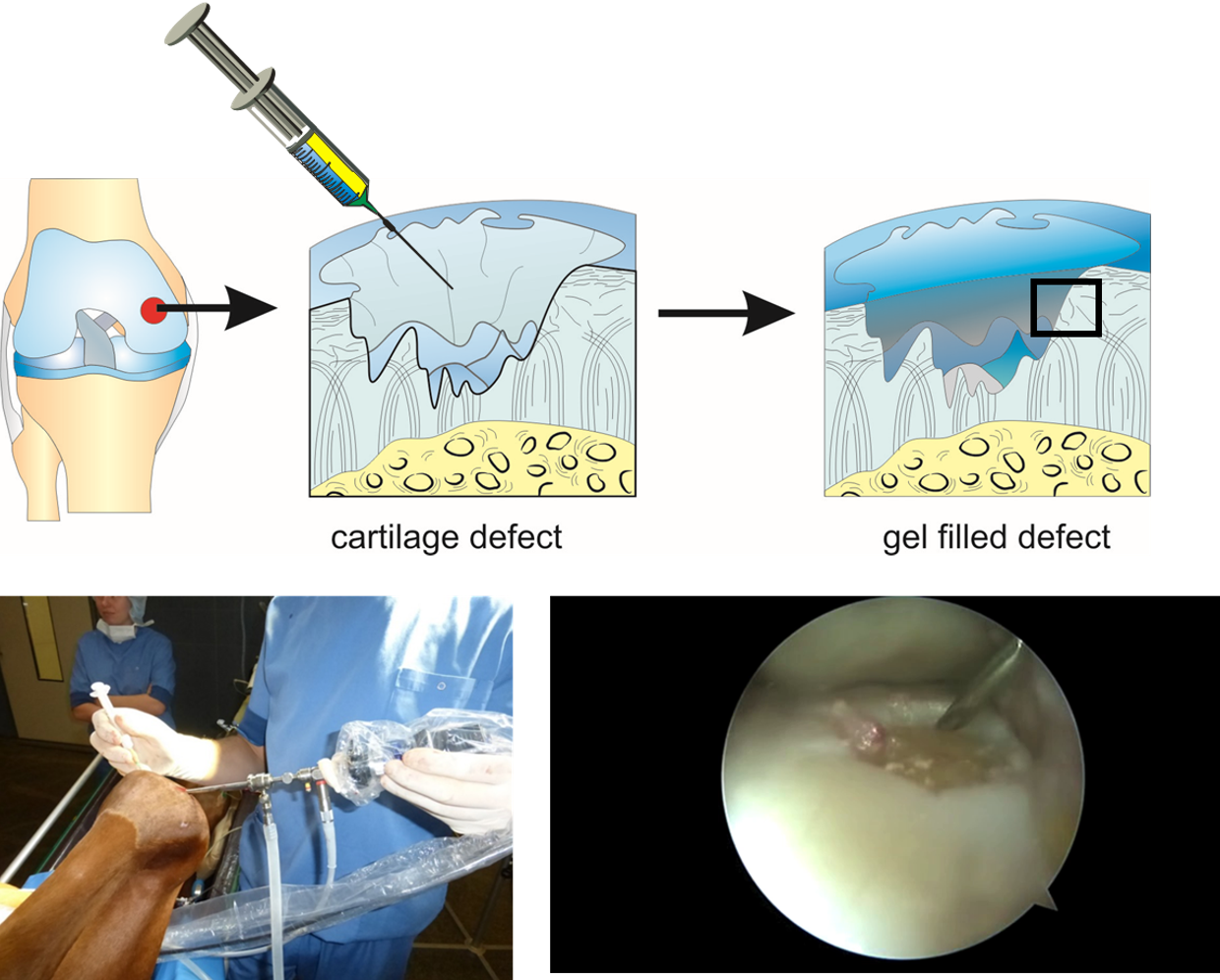Injectable hydrogels for cartilage repair
Osteoarthritis is the most common form of rheumatic diseases. In the Netherlands, more than 1.2 million patients suffer from this disease. It is characterized by gradual loss of cartilage, mild to severe signs of inflammation particularly in end stage disease and typical bone malformations. Current treatment is palliative, aimed at reducing pain and coping with the disease. Focal cartilage defects such as frequently observed after joint injury due to sports related incidents are a major risk factor for developing early onset osteoarthritis and still pose a challenging problem for the orthopedic surgeon.
The Developmental BioEngineering group, headed by professor Marcel Karperien, has developed a new reparative treatment strategy. The treatment consists of an injectable hydrogel that is used to fill up a cartilage defect. The injectable hydrogel facilitates the repair of the defect with new cartilage tissue. The hydrogel technology can also be used for cell delivery in the body to facilitate the repair of lost or worn out tissues and can be used in microfluidic devices for high speed production of cell laden microgels that can serve as building blocks for complex tissues using bioprinting of living tissues (figure 1, [1-5]).
- Kamperman T, Henke S, van den Berg A, Shin SR, Tamayol A, Khademhosseini A, Karperien M* and Leijten J*. Single Cell Microgel Based Modular Bioinks for Uncoupled Cellular Micro- and Macro-environments. Advanced Health Care Materials, 2017, 6: 1600913.
- Henke S, Leijten J, Kemna E, Neubauer M, Fery A, van den Berg A, van Apeldoorn A, Karperien M. Enzymatic Crosslinking of Polymer Conjugates is Superior over Ionic or UV Crosslinking for the On-Chip Production of Cell-Laden Microgels. Macromol Biosci. 2016 Jul 21. doi: 10.1002/mabi.201600174.
- Wang R, Leber N, Buhl C, Verdonschot N, Dijkstra PJ, Karperien M: Cartilage adhesive and mechanical properties of enzymatically crosslinked polysaccharide tyramine conjugate hydrogels, Polymers for Advanced Technologies 2014, 25:568-574.
- Moreira Teixeira LS, Leijten JCH, Wennink JWH, Chatterjea AG, Feijen J, van Blitterswijk CA, Dijkstra PJ, Karperien M: The effect of platelet lysate supplementation of a dextran-based hydrogel on cartilage formation, Biomaterials 2012, 33:3651-3661.
- Moreira Teixeira LS, Bijl S, Pully VV, Otto C, Jin R, Feijen J, Van Blitterswijk CA, Dijkstra PJ, Karperien M: Self-attaching and cell-attracting in-situ forming dextran-tyramine conjugates hydrogels for arthroscopic cartilage repair, Biomaterials 2012, 33:3164-3174

